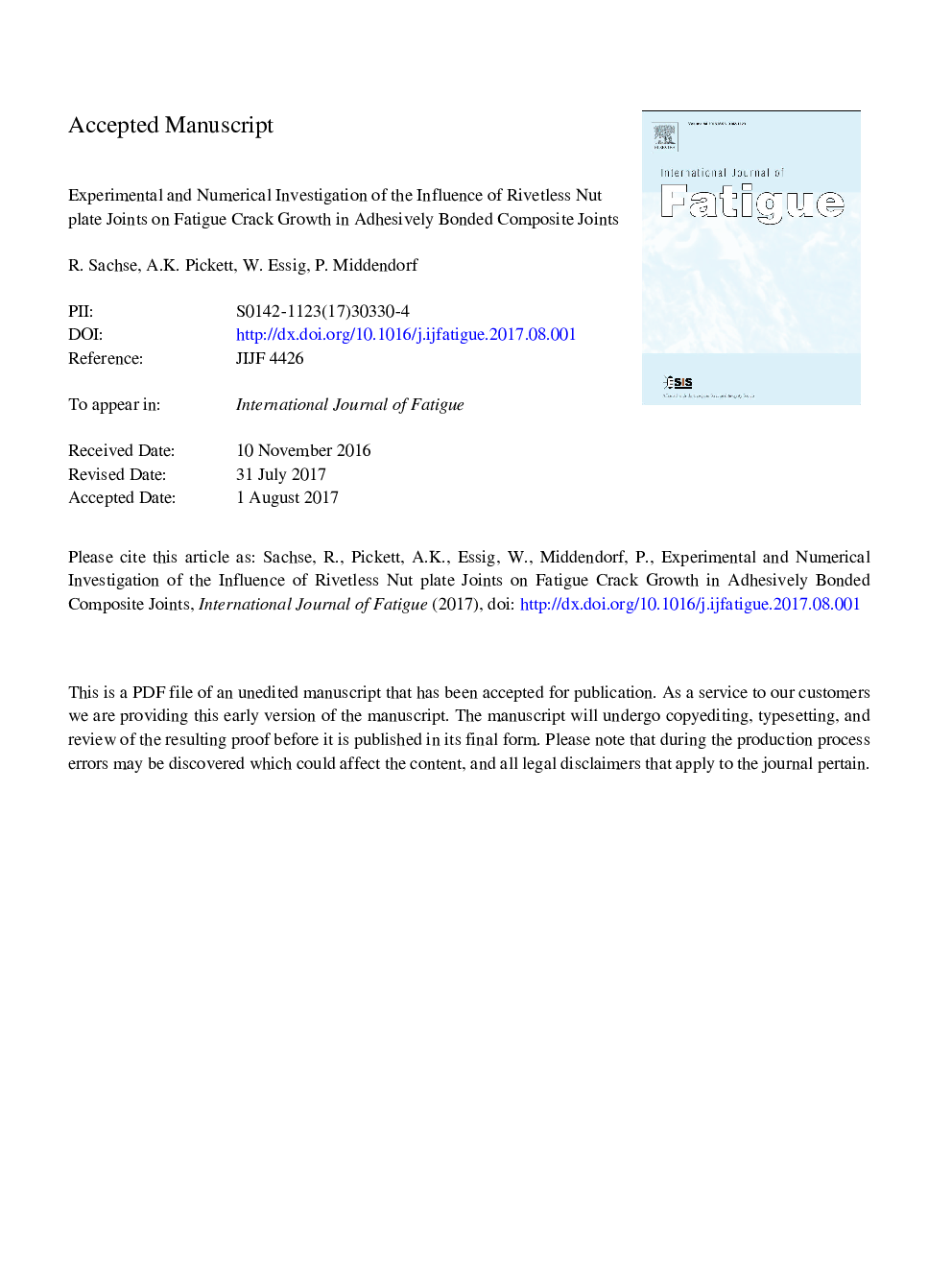| Article ID | Journal | Published Year | Pages | File Type |
|---|---|---|---|---|
| 5014932 | International Journal of Fatigue | 2017 | 33 Pages |
Abstract
Current practice to design aircraft composite bonded joints only allows a non-growth certification approach for failure. However, an alternative damage tolerant approach would hold significant potential for weight and cost savings, but requires a thorough understanding of damage processes and methods to predict crack arrest in the adhesive bondline. In this paper application of a rivetless nut plate joint to arrest fatigue crack growth in hybrid adhesive-mechanical composite joints is studied experimentally and numerically. Results show that significant reduction of crack growth rate over a wide range of loading is possible. A material model for spatial fatigue crack growth in the adhesive bondline is developed and implemented in the commercial software ABAQUS using a user-defined material subroutine for cohesive zone elements. Numerical simulations closely match experimental results and identify peel load reduction and local reinforcement as the main mechanisms to arrest fatigue crack propagation.
Related Topics
Physical Sciences and Engineering
Engineering
Mechanical Engineering
Authors
R. Sachse, A.K. Pickett, W. Essig, P. Middendorf,
